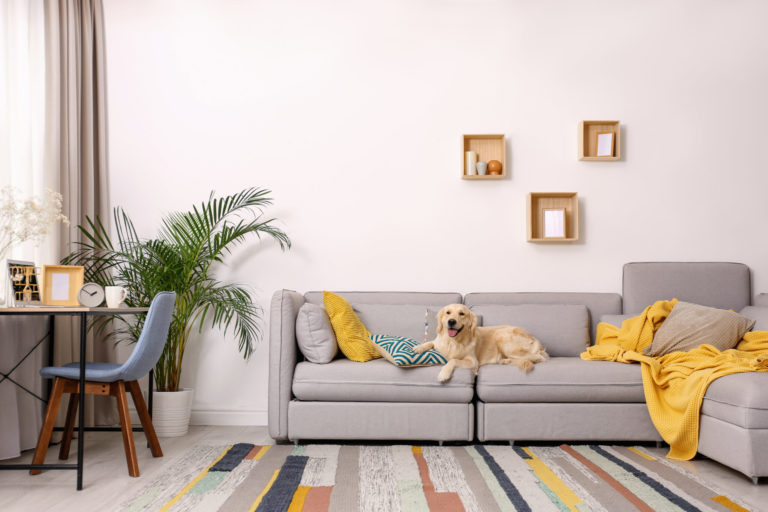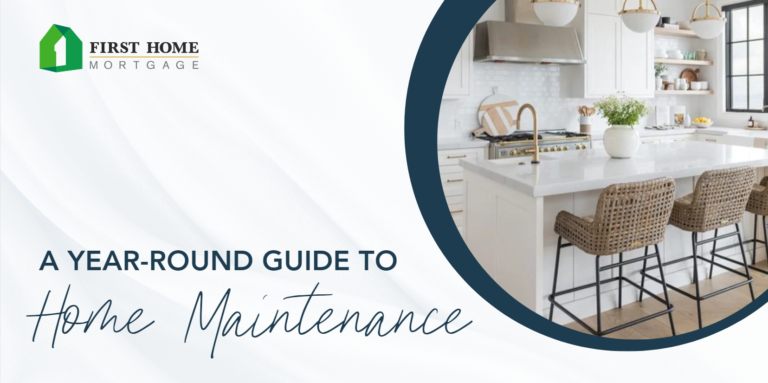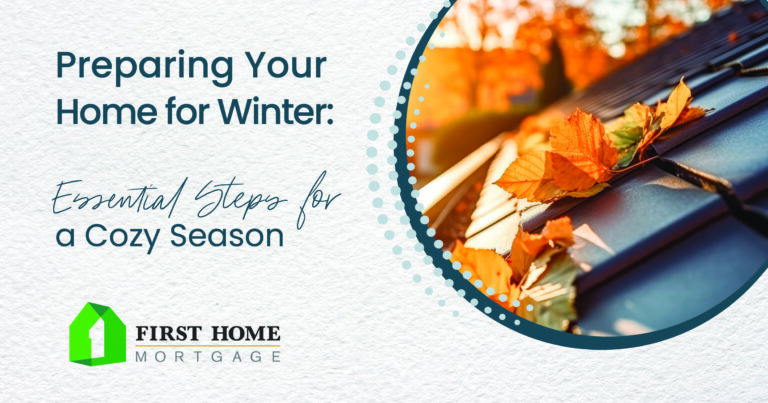
When a new furry friend enters your life, it doesn’t take long for them to become an important member of the family. Animals, especially young ones, can be very curious and easily get into things they shouldn’t. It’s important that you take steps to protect your pet from hazards in your home and from potential damages caused by your pet. Here are some tips for pet-proofing different areas of your home.
Throughout the Home
In many ways, your pet is a lot like a little kid. Think about the steps you’d take to make your home safe for a child. If there are areas of your home you don’t want your pet to access, consider using a pet or baby gate to restrict where they can go. You may even want to use childproof latches to stop them from using their paws to open cabinets and drawers. Like you would for a child, beware of small items they can easily swallow such as batteries, coins, magnets, buttons, paper clips, and anything with small removable parts. Try keeping electrical wires and cords out of your pet’s reach so they can’t chew through them, or at least try making a habit of unplugging things when they aren’t in use to minimize the risk of electrocution. The tidier you keep your house, the less likely your pet is to get into something they shouldn’t. When it comes to house plants inside and out, do your research; some flowers and plants (including lilies, tulips, and azaleas) are poisonous to animals and can make your pet critically ill. The ASPCA has a list of toxic and non-toxic plants you can review.
Kitchen
Keep your food up high and secure where your pet cannot access it. The ASPCA has a list of food to avoid feeding your pet so you can take extra care securing foods that are more likely to make your pet sick. Beyond the well-known chocolate, these foods include avocados, onions and garlic, grapes and raisins, coffee, nuts, salt, and gum. Even when food isn’t harmful to your animal, the wrapper or packaging it comes in could be. Watch out for little things like twist ties and can tabs that your pet could easily swallow. For extra safety, you may want to use a gate to keep your pet out while you’re cooking so they don’t get under your feet and they stay away from any hot surfaces or open flames
Laundry Room
Always check to make sure your pet hasn’t gotten into the washer or dryer before loading them. Keep laundry detergent, bleach, and other chemicals up high and out of reach. It’s best to keep your laundry in a basket to minimize the risk of your pet chewing on or even swallowing small articles of clothing such as socks. When swallowed, things like strings and buttons can cause digestive issues.
Bathroom
Keep any and all medications, soaps, cosmetics, and cleaners up and out of your pet’s reach. Make sure your toilet lid is kept closed to stop your pet from drinking from the toilet. Don’t leave your pet alone when there’s water in the tub or shower to prevent drowning.
Living Room
If your pet is particularly rambunctious, you may want to secure your furniture to the wall to avoid potential tip-overs which could injure your animal or someone else nearby. If you have children, keep their toys tucked away when not in use so your pet can’t chew on or swallow them, especially small toys. If you’re concerned about your pet damaging upholstery, there are couch and chair protectors you can buy so they can’t scratch or chew your furniture.
Bedrooms
Keep your clothes and shoes out of your pet’s reach so they don’t have an opportunity to chew on them. Be careful what you leave on nightstands if it’s at eye level or within swiping reach of your animal. Make sure your pet isn’t sleeping in any drawers or closets before closing them. If you have a very small or senior pet that sleeps in bed with you, you may want to purchase a ramp or set of steps to help them get into bed easier.
Outdoors
If your pet has access to a pet door, it’s essential that you have a fence or other barrier in place to keep them within your yard. Check your fence for any gaps or holes where your pet might be able to get through. Be careful and follow directions when using pesticides and other chemicals as these can make your pet sick if they come in contact with them; keep your pet inside when working with chemicals outside and store all chemicals up high and away when not in use. After your pet has been outside, especially in tall grass, it’s important you check them for pests such as fleas and ticks.
Are you looking to purchase a new home or refinance your current home? Reach out to one of our loan officers today to get more information!


